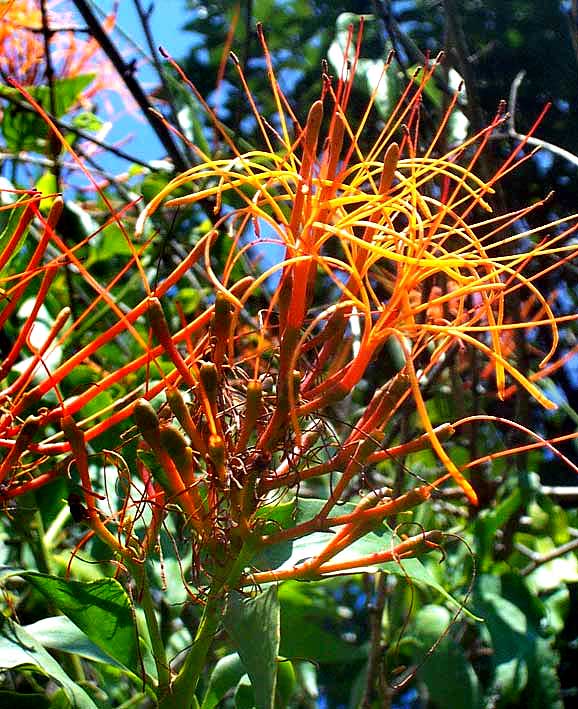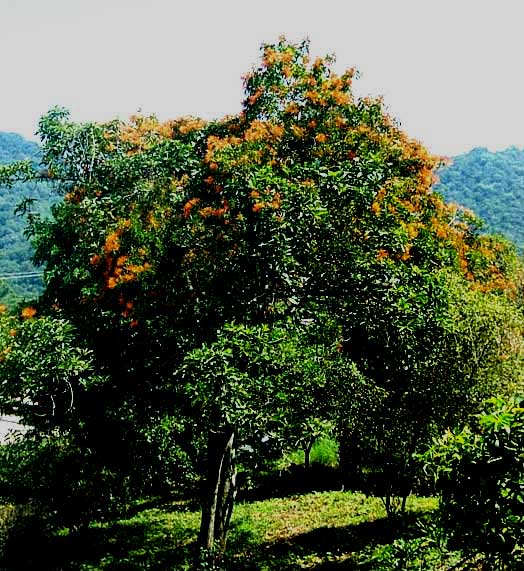Excerpts from Jim Conrad's
Naturalist Newsletter

from the September 28, 2007 Newsletter issued from Sierra Gorda Biosphere Reserve Headquarters in Jalpan, Querétaro, MÉXICO
PARROT-FLOWERS
It's been six months since my last six-month visa was issued so last Monday morning I boarded the first of several buses that would take me to the US/Mexico border and another six-month visa.
I've been wanting to walk around the pretty little town of Xilitla (hee-LEET-la) in San Luis Potosí state east of here, just across the easternmost and highest ridge of the Eastern Sierra Madres, so my first ticket took me there. Xilitla is always bustling with a colorful street market because people from communities from many miles around go there for shopping. Being on the Sierra Madres' eastern slope, more rain falls there than here so the vegetation is lusher, trees bigger, and you see birds and insects there not found on this side. Coffee bushes grow around people's houses.
To me the most spectacularly flowering plant in Xilitla that day was the tricky, orange-blossomed one shown below:

A close-up shows the cup-size blossoms at the top of this page.
What's tricky about this sighting is that the first picture above does not show a medium-size tree topped with its own orange blossoms but rather a medium-size tree thickly inhabited by woody bushes growing parasitically among the tree's upper branches. The flowering bush is a kind of glorified mistletoe, actually a member of the Mistletoe Family, the Loranthaceae. It's the genus PSITTACANTHUS, P. calyculatus, I'm guessing.
Last Monday afternoon certain slopes around Xilitla emitted an orange glow in the midday sun, which was very pretty against the mountains' lush greenery. Several times I've been told by folks here that after a recent drought mistletoe populations mushroomed, and now many trees are so heavily parasitized that they're dying. After seeing the orange-hued slopes around Xilitla I think that might be true.